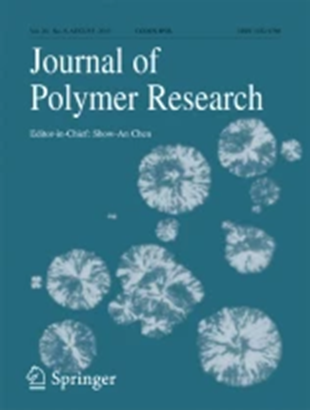Ionic Cross-Linking of Polypropylene: Effect of Maleic Anhydride Grafting Temperature and Ionic Plasticizer
Abstract
Polypropylene (PP) is chemically modified with maleic anhydride (MAH) and cross-linked with zinc oxide at different concentrations by melt mixing. The grafting process is conducted at two different temperatures, 150 °C and 180 °C. Using relatively high concentrations of initiator a grafting degree sufficient for cross-linking is achieved. FTIR spectroscopy confirms that a lower processing temperature leads to a significantly higher grafting efficiency. The concentration of stearic acid influences the neutralization degree of the cyclic anhydride grafts significantly, and, therefore, a mechanism has been proposed to explain this behaviour. The DSC thermograms of the grafted samples reveal secondary melting points at lower temperatures attributable to the interactions between the polar grafts. Samples grafted at the lower processing temperature undergo long-chain branching and exhibit complex thermal behaviour. Rheological analysis shows that ionic cross-linking has improved the melt properties; the analysis also reveals the formation of a dual-phase morphology developed with cross-linking and supports the proposed mechanism. Dynamic-mechanical thermal analysis proves the mechanical stability at elevated temperatures and reveals the cross-linked samples' ion-hopping temperatures. Tensile testing is also performed to evaluate the mechanical properties of cross-linked samples.


 求助内容:
求助内容: 应助结果提醒方式:
应助结果提醒方式:


